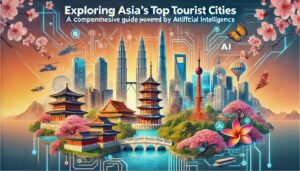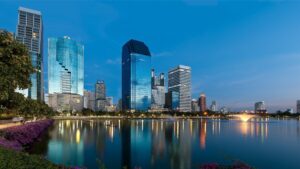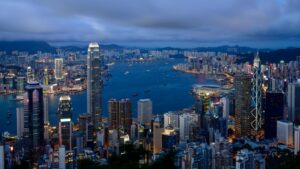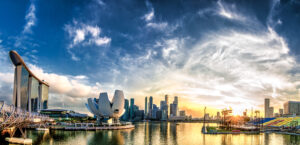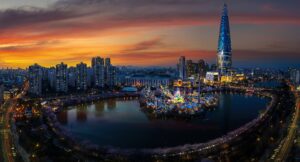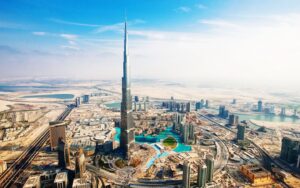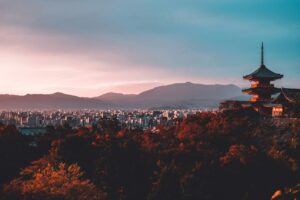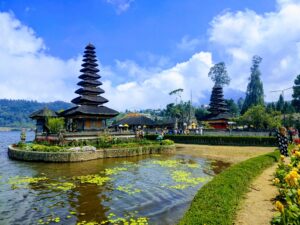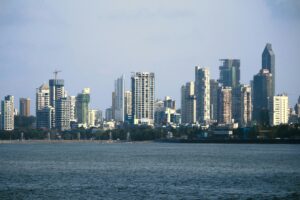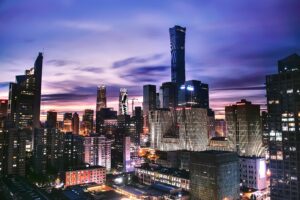Tourism has long been a gateway to cultural exchange and economic development, and in today’s digital age, we can harness the power of artificial intelligence (AI) to make researching destinations more accurate and insightful. AI allows us to gather detailed information about tourist attractions, local culture, history, food, and accommodations—everything a traveler needs to plan the perfect trip. This guide delves into ten of the top tourist cities in Asia, each offering its own unique charm, history, and attractions. Ranked from the most visited to the next, these cities are among the most attractive destinations for travelers worldwide, showcasing the continent’s diversity and appeal. Let’s explore the rich history, geography, and cultural nuances that set each city apart.
1. Tokyo, Japan
History:
Tokyo was originally a small fishing village known as Edo before becoming the political center of Japan in 1603 under the Tokugawa Shogunate. After the Meiji Restoration in 1868, Edo was renamed Tokyo, meaning “Eastern Capital,” and became the imperial capital of Japan.
Geography:
Situated on Japan’s eastern coast, Tokyo is the most populous metropolitan area in the world. Its location near Tokyo Bay provides a balance of coastal beauty and urban development.
Top Attractions:
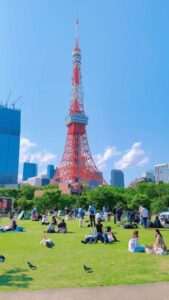
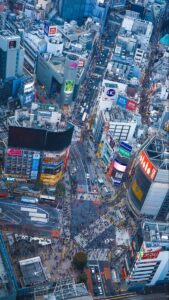
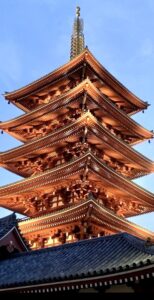

- Tokyo Tower: Inspired by the Eiffel Tower, offering panoramic views of the city.
- Shibuya Crossing: Known as the world’s busiest pedestrian crossing.
- Senso-ji Temple: Tokyo’s oldest temple, located in the historic Asakusa district.
- Meiji Shrine: A peaceful Shinto shrine surrounded by a forest in the middle of the city.
Best Hotels:
- Aman Tokyo: A luxury hotel offering serene minimalism with spectacular views of the skyline.
- The Peninsula Tokyo: Known for its elegance and prime location near the Imperial Palace.
People and Food:
Tokyoites are polite and reserved, often known for their discipline and respect for order. Tokyo is a culinary capital, boasting a wide range of foods from street food like yakitori (grilled chicken skewers) and ramen to high-end sushi at Michelin-starred restaurants.
2. Bangkok, Thailand
History:
Founded in 1782 by King Rama I, Bangkok became the capital of Thailand after the fall of the former capital, Ayutthaya. Over the centuries, Bangkok has developed into a vibrant metropolis, known for its blend of traditional and modern culture.
Geography:
Located in central Thailand on the Chao Phraya River, Bangkok is a flat city with a tropical monsoon climate, characterized by warm temperatures and seasonal rains.
Top Attractions:
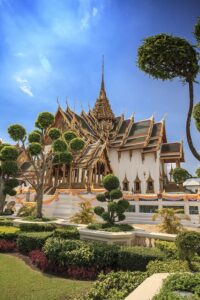
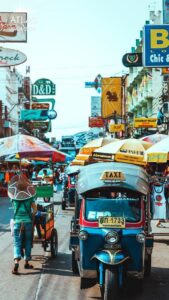


- Grand Palace: The former royal residence and home to Wat Phra Kaew, the Temple of the Emerald Buddha.
- Wat Arun: The Temple of Dawn, located on the west bank of the Chao Phraya River.
- Chatuchak Weekend Market: One of the largest markets in the world, offering a vast array of goods.
- Khao San Road: A backpacker hub known for its bustling nightlife and affordable accommodations.
Best Hotels:
- Mandarin Oriental Bangkok: A historic luxury hotel along the river.
- The Siam: A boutique hotel offering a blend of Thai and Art Deco design.
People and Food:
The people of Bangkok are friendly and welcoming, with a strong emphasis on hospitality. Thai cuisine is world-renowned for its balance of sweet, sour, salty, and spicy flavors, with must-try dishes like pad Thai, green curry, and som tam (papaya salad).
3. Hong Kong, China
History:
Hong Kong was a British colony from 1841 until its handover to China in 1997. Its history as a global trade hub and gateway between East and West has shaped it into one of the most dynamic cities in Asia.
Geography:
Located on the southern coast of China, Hong Kong consists of Hong Kong Island, Kowloon, the New Territories, and over 200 smaller islands. It is known for its stunning harbor, mountainous terrain, and skyscrapers.
Top Attractions:
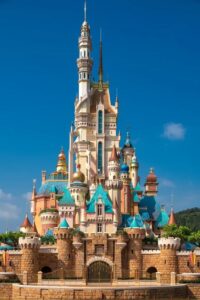
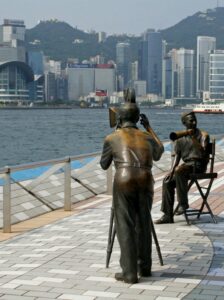
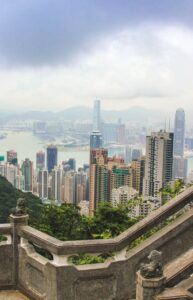
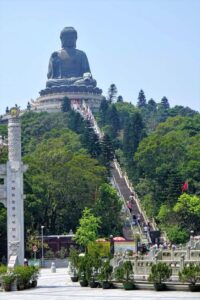
- Victoria Peak: Offers breathtaking views of the city’s skyline and harbor.
- Tsim Sha Tsui Promenade: Known for its panoramic views of Victoria Harbour and nightly light shows.
- Big Buddha (Tian Tan Buddha): A massive bronze statue located on Lantau Island.
- Disneyland Hong Kong: A family-friendly attraction offering a magical experience.
Best Hotels:
- The Ritz-Carlton Hong Kong: Famous for its sky-high location and luxurious amenities.
- The Peninsula Hong Kong: Known for its timeless elegance and exceptional service.
People and Food:
Hongkongers are known for their fast-paced lifestyle and entrepreneurial spirit. Hong Kong is a culinary paradise, famous for dim sum, char siu (barbecued pork), and fresh seafood. The city’s food scene is a fusion of Cantonese, Western, and international influences.
4. Singapore
History:
Founded as a British trading colony in 1819, Singapore gained independence in 1965 and has since developed into one of the world’s wealthiest countries. Its success is attributed to its strategic location and strong trade relationships.
Geography:
Singapore is a small island nation located at the southern tip of the Malay Peninsula. Despite its small size, it boasts a diverse landscape of urban skyscrapers, green parks, and coastal areas.
Top Attractions:
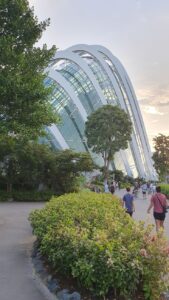
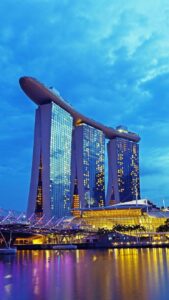

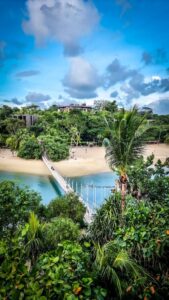
- Marina Bay Sands: Known for its iconic infinity pool and observation deck.
- Gardens by the Bay: A futuristic garden with towering Supertree structures.
- Sentosa Island: A resort island featuring theme parks, beaches, and luxury hotels.
- Singapore Zoo: One of the world’s best zoos, known for its immersive exhibits.
Best Hotels:
- Raffles Hotel: A colonial-era luxury hotel known for its elegance and history.
- Capella Singapore: A luxury resort on Sentosa Island offering tranquil surroundings.
People and Food:
Singaporeans are known for their efficiency and multicultural background, with Chinese, Malay, and Indian influences. Singapore’s food scene is a highlight, with famous dishes like Hainanese chicken rice, laksa, and chili crab served in bustling hawker centers.
5. Seoul, South Korea
History:
Seoul has been a political and cultural center for over 600 years, dating back to the Joseon Dynasty. It has since evolved into a modern metropolis while maintaining its traditional roots.
Geography:
Seoul is located in the northwest part of South Korea, on the Han River. The city is surrounded by mountains, providing a scenic backdrop to its high-rise buildings.
Top Attractions:
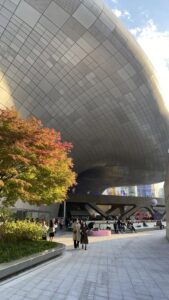
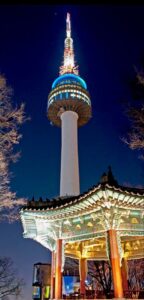
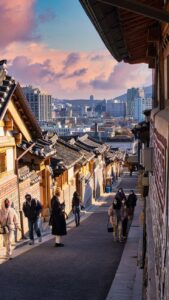
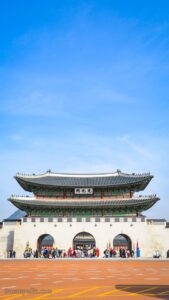
- Gyeongbokgung Palace: The main royal palace of the Joseon Dynasty.
- Bukchon Hanok Village: A traditional Korean village with preserved hanok (traditional houses).
- N Seoul Tower: A popular spot offering panoramic views of the city.
- Dongdaemun Design Plaza: A futuristic cultural and shopping complex.
Best Hotels:
- Four Seasons Hotel Seoul: A luxury hotel offering modern comforts and stunning views.
- The Shilla Seoul: Known for its elegance and top-notch service.
People and Food:
Seoulites are known for their innovative spirit and appreciation of both modern and traditional culture. Korean cuisine is characterized by kimchi (fermented vegetables), bulgogi (marinated beef), and bibimbap (mixed rice with vegetables and meat). Street food, such as tteokbokki (spicy rice cakes), is also a must-try.
6. Dubai, United Arab Emirates
History:
Dubai was once a small fishing village before discovering oil in the 1960s, which transformed it into a global business hub. Today, it is known for its luxury, futuristic architecture, and shopping.
Geography:
Located on the southeastern coast of the Arabian Peninsula, Dubai is surrounded by desert and bordered by the Persian Gulf. Its skyline is dominated by ultramodern skyscrapers, including the world’s tallest building, the Burj Khalifa.
Top Attractions:
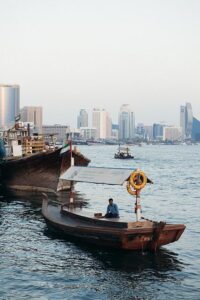
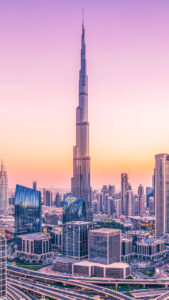
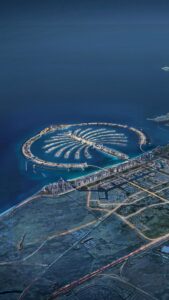

- Burj Khalifa: The tallest structure in the world, offering an observation deck with breathtaking views.
- The Dubai Mall: One of the world’s largest shopping centers, featuring an aquarium and ice rink.
- Palm Jumeirah: A man-made island shaped like a palm tree, home to luxury resorts.
- Dubai Creek: A historic waterway offering boat rides and a glimpse into old Dubai.
Best Hotels:
- Burj Al Arab: An iconic luxury hotel known for its sail-shaped design.
- Atlantis, The Palm: A massive resort on Palm Jumeirah, famous for its water park and aquarium.
People and Food:
Dubai is home to a diverse population of expatriates and locals. Emirati cuisine includes dishes like machboos (spiced rice with meat), hummus, and shish taouk (grilled chicken). However, the city’s food scene is highly international, with fine dining from all over the world.
7. Kyoto, Japan
History:
Kyoto served as Japan’s capital and the emperor’s residence for over 1,000 years, making it one of the country’s most historically significant cities. It remains the cultural heart of Japan.
Geography:
Kyoto is located in the Kansai region of Japan’s Honshu island, surrounded by mountains on three sides. The city’s geography provides stunning natural scenery
, particularly during the cherry blossom and autumn leaf seasons.
Top Attractions:
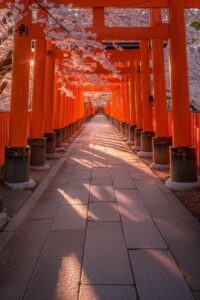
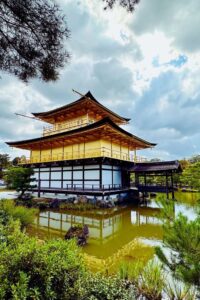
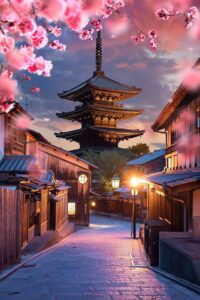
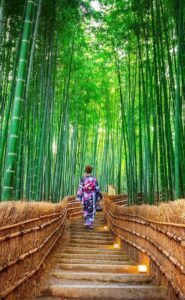
- Fushimi Inari Shrine: Famous for its thousands of red torii gates leading up a mountain.
- Kinkaku-ji (Golden Pavilion): A Zen Buddhist temple covered in gold leaf.
- Arashiyama Bamboo Grove: A serene forest of towering bamboo.
- Gion District: Known for its traditional wooden machiya houses and geisha culture.
Best Hotels:
- The Ritz-Carlton Kyoto: Offering luxury accommodations with views of the Kamo River.
- Hoshinoya Kyoto: A luxury ryokan (traditional inn) located along the river in Arashiyama.
People and Food:
Kyotoites are known for their refined manners and deep appreciation of tradition. Kyoto is famous for kaiseki (a multi-course meal) and yudofu (tofu hotpot). The city is also known for its delicate sweets, including matcha (green tea) desserts.
8. Bali, Indonesia
History:
Bali’s history is deeply intertwined with its Hindu culture, which arrived from India in the early centuries AD. It was later influenced by the Majapahit Empire, and today, Bali is renowned for its traditional art, music, and spirituality.
Geography:
Bali is an island in Indonesia, located between Java and Lombok. Its diverse landscape includes volcanic mountains, terraced rice paddies, and pristine beaches, making it a top destination for both nature and culture lovers.
Top Attractions:

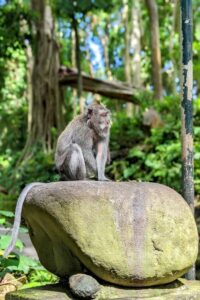
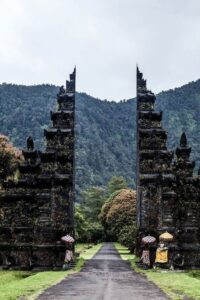
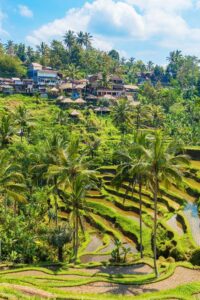
- Uluwatu Temple: A cliffside temple offering dramatic views of the ocean.
- Tegallalang Rice Terraces: Famous for their breathtaking beauty and traditional irrigation system.
- Ubud Monkey Forest: A sacred sanctuary and home to hundreds of monkeys.
- Kuta Beach: Known for its vibrant nightlife and excellent surfing conditions.
Best Hotels:
- Amandari: A luxurious resort in Ubud, offering traditional Balinese design and tranquil surroundings.
- Four Seasons Resort Bali at Sayan: Known for its stunning views of the Ayung River Valley.
People and Food:
Balinese people are warm and welcoming, with a deep sense of spirituality. The island’s cuisine is rich in flavor, with dishes like nasi goreng (fried rice), satay (grilled skewers), and babi guling (roast pork). Traditional Balinese feasts often involve elaborate dishes and communal dining.
9. Mumbai, India
History:
Formerly known as Bombay, Mumbai is the financial capital of India and has a rich history as a major port city. It was an important center during the British colonial era and remains a vibrant, bustling metropolis.
Geography:
Mumbai is located on the western coast of India, along the Arabian Sea. The city is built on seven islands that were merged into a single landmass over time.
Top Attractions:

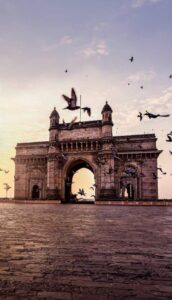
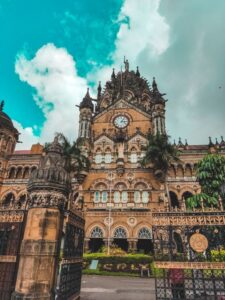

- Gateway of India: A colonial-era monument overlooking the Arabian Sea.
- Chhatrapati Shivaji Maharaj Terminus: A UNESCO World Heritage Site and architectural masterpiece.
- Marine Drive: A scenic promenade known as the “Queen’s Necklace” due to its nighttime lights.
- Elephanta Caves: Ancient rock-cut temples located on Elephanta Island.
Best Hotels:
- The Taj Mahal Palace: A historic luxury hotel known for its opulence and heritage.
- The Oberoi Mumbai: A modern luxury hotel offering views of the Arabian Sea.
People and Food:
Mumbaikars are known for their resilience and multiculturalism. The city’s food scene reflects its diversity, with popular street foods like vada pav (spicy potato fritter in a bun), pav bhaji (spicy vegetable mash), and bhel puri (puffed rice with chutneys) dominating the local palate.
10. Beijing, China
History:
As the capital of China for centuries, Beijing has a rich imperial history, with iconic landmarks that reflect its role as the heart of Chinese civilization. The city was the political center of several dynasties, including the Ming and Qing.
Geography:
Beijing is located in northern China, near the Great Wall and surrounded by mountains to the north and west. It is a flat city with a continental monsoon climate, experiencing hot summers and cold winters.
Top Attractions:
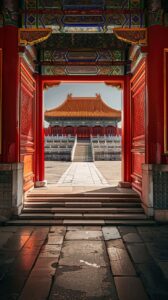
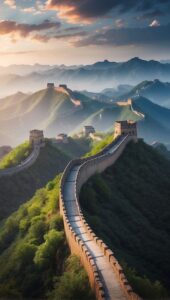

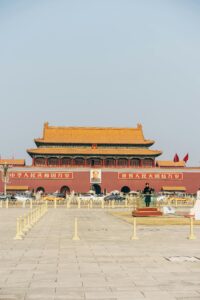
- The Great Wall of China: One of the most famous landmarks in the world, located just outside Beijing.
- The Forbidden City: The former imperial palace and a symbol of China’s dynastic history.
- Tiananmen Square: The largest public square in the world, adjacent to the Forbidden City.
- Summer Palace: A beautiful imperial garden featuring lakes, palaces, and temples.
Best Hotels:
- Aman Summer Palace: A luxury hotel adjacent to the Summer Palace, offering traditional Chinese architecture and elegance.
- The Peninsula Beijing: Known for its opulent design and central location.
People and Food:
Beijingers are known for their pride in their history and culture. The city is famous for Peking duck, a dish that has been served in the capital for centuries. Beijing’s food scene also includes traditional dishes like zhajiangmian (noodles with soybean paste) and various dumplings.
Conclusion:
These ten cities in Asia each offer something unique, from the modern skyscrapers of Tokyo to the ancient temples of Bali. Each city’s history, culture, and attractions make it a top destination for tourists seeking diverse experiences. By leveraging artificial intelligence, we have compiled a detailed and accurate guide that will help travelers discover the best of what Asia has to offer. Whether you’re looking for natural beauty, historical landmarks, or vibrant city life, these destinations are sure to provide unforgettable experiences.

